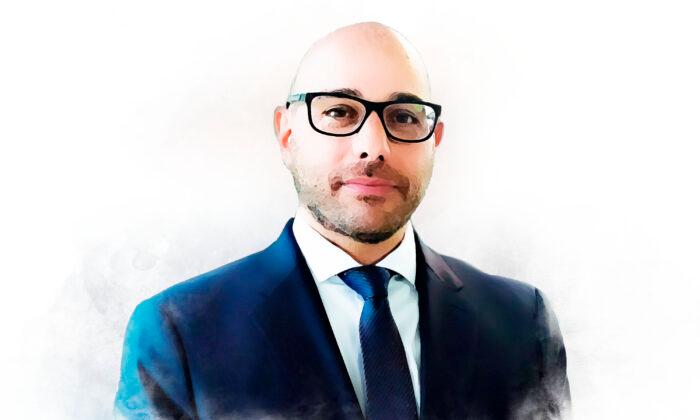“If the product is safe,” asks Aaron Siri, “why does the manufacturer need blanket immunity to liability for injuries the product causes?”
In a recent episode of “American Thought Leaders,” host Jan Jekielek and Siri discussed vaccine manufacturers and their unprecedented protections from liability for injuries and even death caused by their products. Siri, a managing partner at Siri & Glimstad, has led several high-profile lawsuits against vaccine manufacturers and federal health agencies since the start of the COVID-19 pandemic.
If you’re injured by a vaccine, you can’t sue the manufacturer, you have to sue the federal government, the secretary of the Department of Health and Human Services, through the Vaccine Injury Compensation Program. He asked if I would be interested, and I took the case, and we ended up obtaining compensation. I’d taken on a number of related cases as well.
After the vaccine manufacturers asked Congress to give them this immunity, claiming that otherwise they would be forced to stop producing three routine children’s vaccines because of the liability costs, in 1986 Congress granted them immunity. Had Congress done nothing, and just let the market forces do what they do, would those vaccine manufacturers have gone out of business? No, they’re in the business to make money. They probably would have retooled and made a better, safer product.
But Congress gave them immunity, not only for those three vaccines, but for any future recommended childhood vaccines.
That act of immunity has set off the cascade of events we see today around these vaccines: how the public views them, how our health authorities treat them, and how pharma has been able to run amok.
But just as the first COVID vaccine was about to be authorized in December 2020, the CDC and the FDA changed their tune, after lots of reports started coming into VAERS. They said there were issues with VAERS and rolled out V-safe.
In designing V-safe, the CDC offered a list of check-the-box options regarding the vaccine. One category asked questions of people: Did they need medical care? Did they miss school or work? Were they unable to perform normal daily duties? ICAN, my client, wanted to know at what rate people needed medical care after a COVID-19 vaccine.
We asked the CDC to provide that data, but it refused. As usual with our health agencies, despite their claims of transparency, we had to sue them in federal court to get the information. They finally capitulated—it took almost a year and a half—and provided the data.
We then saw why they didn’t want the public to have it, because it showed that 7.7 percent of V-safe users, out of a little over 10 million users, reported needing medical care after a COVID-19 vaccine. These 10 million users were the enthusiasts, the ones clamoring for the shot. Nobody was yet being mandated to get it. When 7.7 percent are reporting they needed medical care, it’s probably a good reflection of the full population that got the vaccine. Another 25 percent reported being unable to go to school or work and to perform normal daily activities. So 32 percent of folks reported having some issue.
What’s concerning here is the CDC transparency. During the year and a half they were hiding this data from the public while we fought to get it, they published over a dozen studies using V-safe data to assure the public these vaccines were safe. But those studies only included the first week of V-safe data reporting, of people needing medical care after the shot. And that rate was something like half a percent. But this idea that the first week is representative of safety, they know that’s not the case. For the first six weeks, for example, the numbers are way larger. They never disclosed this to the public.
By the way, COVID has made many people really look at vaccines for the first time. They saw the clinical trials, the coercion, the rollout, and how some of the science was being mucked with on natural immunity. They’re now paying attention. Scientists who take issue with these products are getting on the media and being interviewed. But there were such scientists for many of the other vaccines. I know them.
Regulatory oversight is the second way we assure safe products, but it’s far weaker in this case. The Department of Health and Human Services is the department under which you have the CDC, the FDA, the NIH, and a list of over 20 health agencies. That department is responsible for promoting vaccines, yet it’s also responsible for the safety of vaccines. Those two things are in conflict. You tell an agency to promote this product, and then you tell them to ensure its safety. Finding any safety issue undermines the promotion function, leaving our health agencies in many ways hopelessly conflicted.
It’s that ability to say no that is so critical, because it is the last stop on that train to protect you and your child from a product that you think might harm you or your child. If you can’t do that without being kicked out of school, thrown out of your job, or excluded from civil society, then you don’t really have the right to say no. And hopefully one day, we will recognize that these nonprofits were performing an incredible public service.
I hope we can return to appreciating and respecting those rights. That is my hope in 2023 for our country.



![[PREMIERING 4/19, 9PM ET] Mikki Willis: How Our Modern Age Is Severing the Human Connection to the Divine](/_next/image?url=https%3A%2F%2Fimg.theepochtimes.com%2Fassets%2Fuploads%2F2025%2F04%2F18%2Fid5844228-250419-ATL_Mikki-Willis_HD_TN-1080x720.jpg&w=1200&q=75)


